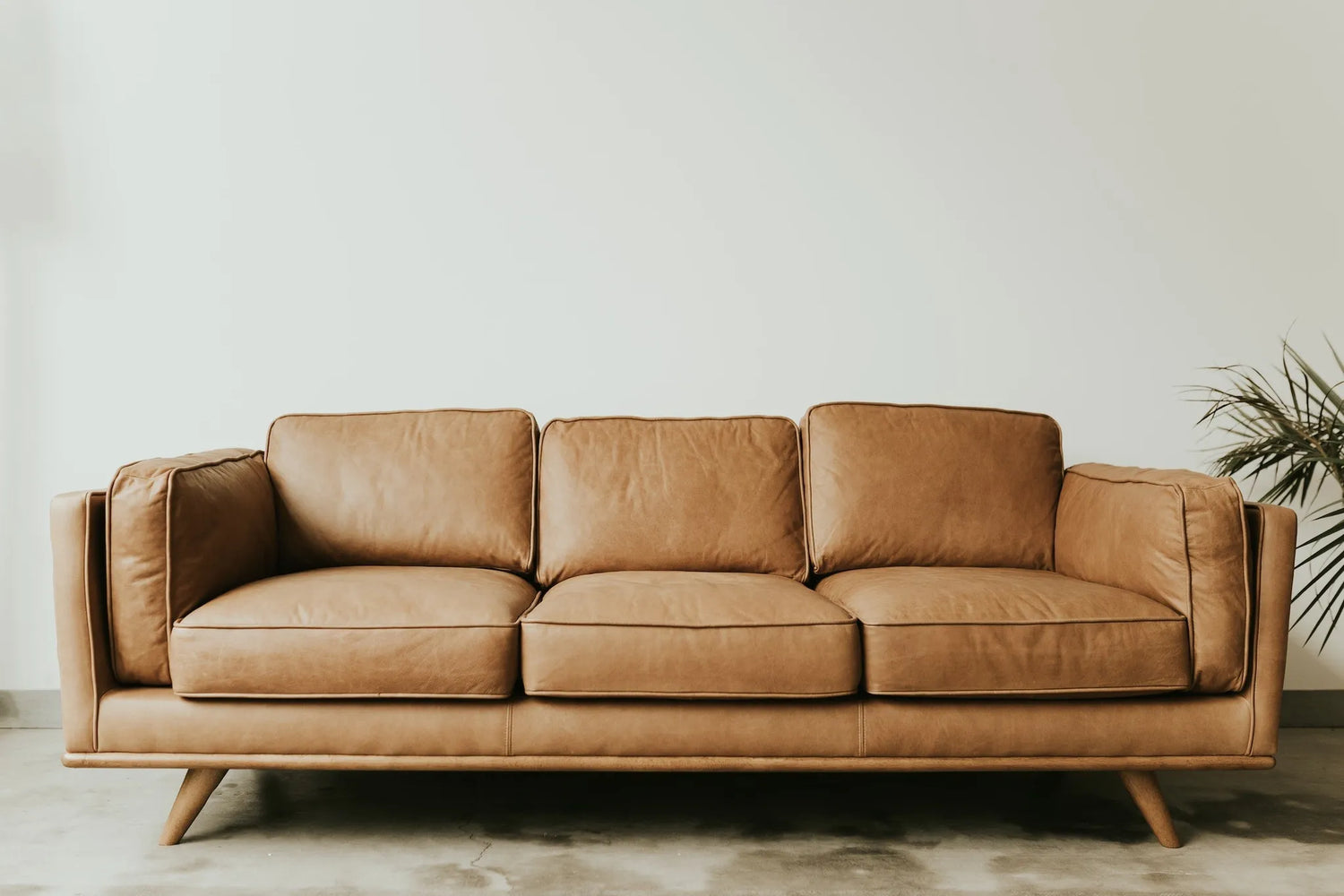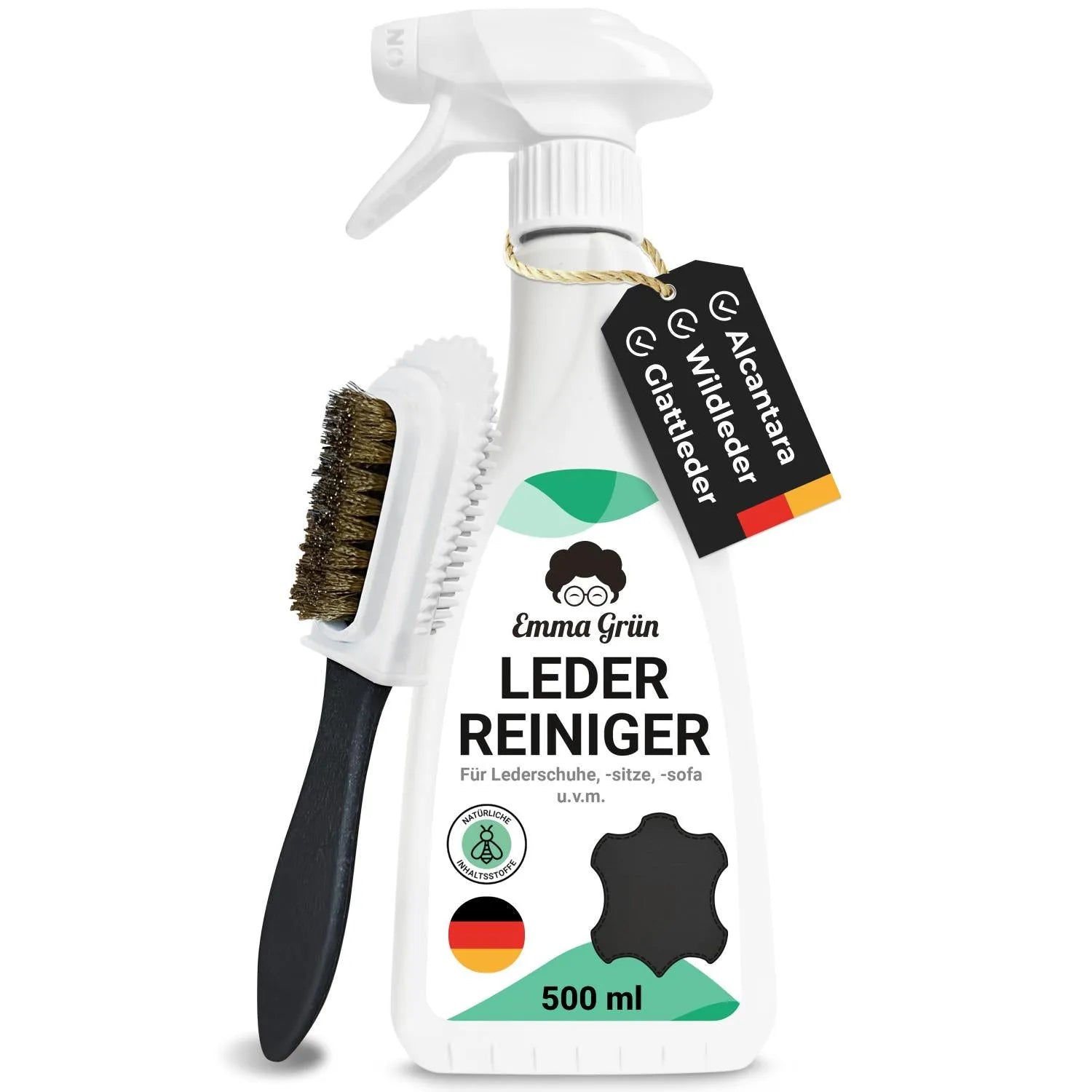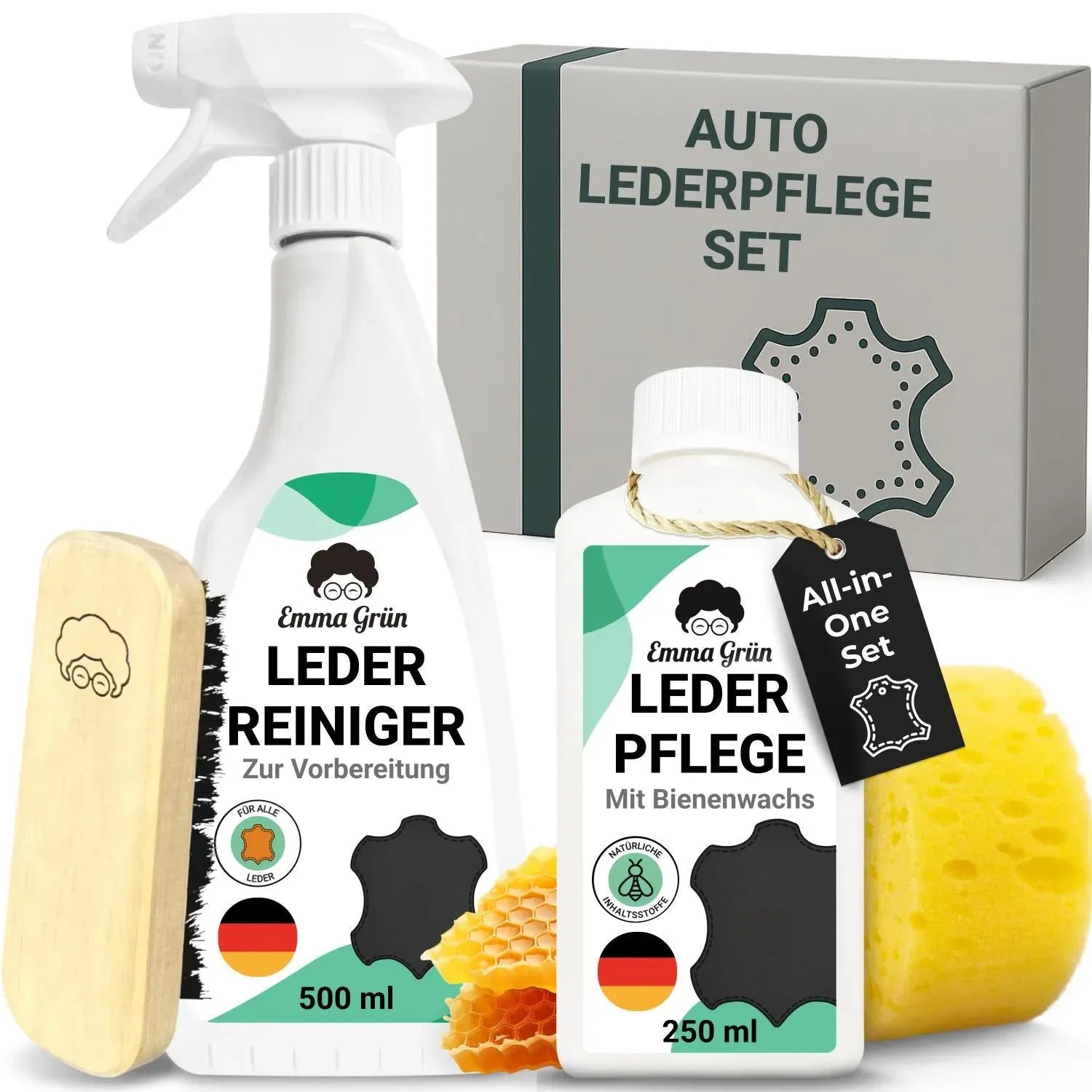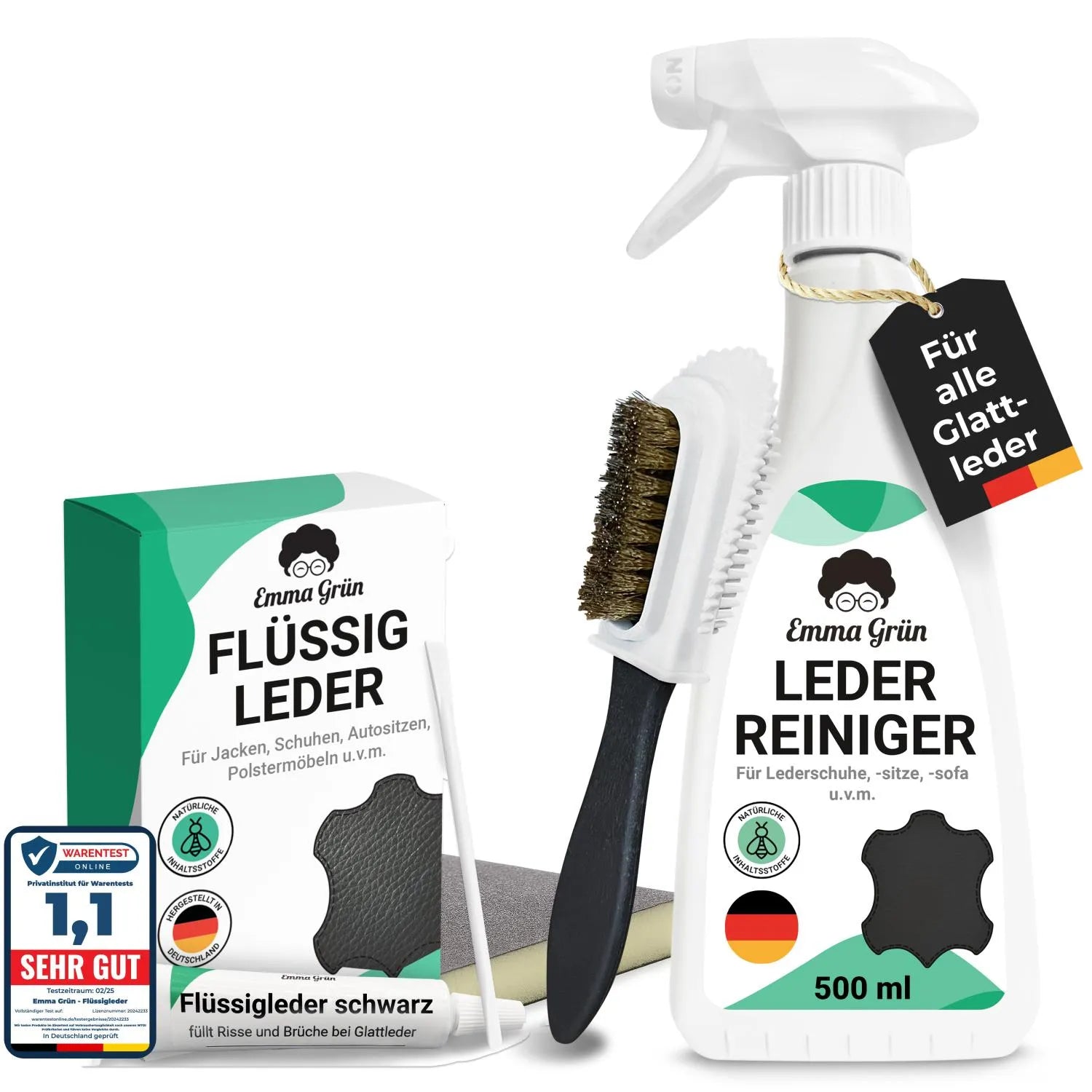Have you chosen a piece of furniture made of aniline leather and now want to know how to best care for it? Congratulations on your choice! Aniline leather is known for its natural, luxurious look. But to maintain this beauty, it needs a little love and care. In this article, you will learn how to best care for aniline leather so that you can enjoy your favorite pieces for a long time.
What is aniline leather?
Aniline leather is a particularly high-quality form of leather that is valued for its natural appearance and softness . Unlike other types of leather that receive a protective surface treatment, aniline leather is only completely dyed and not provided with an additional layer of pigment or protective film . This makes it possible to better show off the natural grain and individual characteristics of the animal skin.

Image source: Pixabay
The dyes used to color aniline leather are usually soluble aniline dyes, hence the name. Because it has no protective surface layer, the material is more sensitive to stains, scratches and fading from sunlight . However, it also offers a particularly pleasant feel and develops a unique patina over time.
Due to its delicate nature, aniline leather requires special care to preserve its beauty and durability. But for many people, it is precisely this naturalness and the possibility of developing a unique patina that is a reason to choose aniline leather rather than semi-aniline leather. But what are the differences between the two types of leather and how do they differ in terms of care?
Aniline leather vs. semi-aniline leather: what are the differences?
Aniline leather and semi-aniline leather are two types of leather that differ in several aspects, especially in terms of their processing, properties and care needs. Here are the main differences:
Aniline leather: These are the properties that distinguish the material
- Processing: Aniline leather is dyed using soluble dyes. Aniline leather does not have a protective pigment layer or varnish on the surface that protects the material from external influences.
- Appearance: The natural material offers a very natural look and allows the original skin structure, pores, scars and other natural features to become visible.
- Feel: Aniline leather is particularly soft and pleasant to the touch.
- Sensitivity: It is more sensitive to stains, liquids and sunlight because it does not have a protective surface layer.
- Aniline leather care: The material is more demanding to care for than semi-aniline leather.
- Use: Aniline leather is often used in high-quality furniture and luxury items.
Semi-aniline leather: characteristics that distinguish it from aniline leather
- Processing: Semi-aniline leather is dyed through in a similar way to aniline leather, but is given a thin protective layer of pigments or varnish to make it more resistant.
- Appearance: During processing, care is taken to ensure that many of the leather's natural characteristics are retained. However, the surface is more uniform than with aniline leather .
- Feel: Semi-aniline leather has a soft feel, but is not as supple as pure aniline leather .

Image source: Pixabay
- Sensitivity: The protective surface layer makes it more resistant to stains and wear.
- Semi-aniline leather care: Products made from semi-aniline leather are easier to care for than those made from aniline leather . Often, cleaning with a damp cloth is sufficient.
- Use: The leather is used in furniture, car seats and other products where a combination of luxury and durability is desired.
Due to its characteristics and properties, aniline leather is suitable for those who want a completely natural and authentic leather experience, but are willing to take on the extra care required to achieve it. Semi-aniline leather offers an optimal compromise between naturalness and durability and is often better suited for everyday use.
Caring for aniline leather: This is why leather needs nourishing care
Aniline leather is robust, but also sensitive to dirt and drying out. Regular care ensures that the leather not only stays clean, but also retains its suppleness and color intensity. The basics of aniline leather care are as follows:
- Regular dusting: A soft cloth is enough to remove the dust.
- Gentle vacuuming: Dust and dirt on the seams and in the cracks are removed with a vacuum cleaner with a brush attachment.
- Treat stains immediately: A damp microfiber cloth will help remove stains. For stubborn cases, we recommend using a sustainable leather cleaner.
- Avoid aggressive cleaning agents: When cleaning aniline leather, it is advisable to use a natural cleaner based on plant-based surfactants. Sustainable products such as the premium leather cleaner from Emma Grün are formulated with mild ingredients and are free from harmful ingredients. A plus point: They help the leather to retain moisture and preserve its unique appearance . Aggressive cleaning agents, on the other hand, can damage the leather and should not be used in the care routine.
- Use natural care products: Sustainable leather care supplies your aniline leather with nourishing ingredients from nature. They penetrate deep into the material, protect it from external influences and help your leather to maintain its natural, beautiful appearance despite daily wear and tear.
- Direct sunlight: Since the leather can fade, direct UV radiation should be avoided.
Emma Grün Tip: When cleaning and caring for leather, we recommend that you use only natural products. This way you can be sure that there are no solvents, chemically produced surfactants or other harmful substances that could damage the material. In addition, the cleaning process provides your favorite pieces with enough moisture that the leather needs for a perfect appearance.
Aniline leather care: Use household remedies with caution
When using home remedies to care for aniline leather, caution is advised as this type of leather is very delicate . However, there are some methods that can be considered. However, keep in mind that the result may vary and it is always advisable to test any home remedy on an inconspicuous area before applying it to the entire piece of furniture. You can use the following home remedies:
- Distilled water: For light soiling, a soft cloth soaked in distilled water may be sufficient. The rule here is: rub gently, but do not make the cloth too wet !
- Mild soapy water: A very mild soapy water can be used for heavier soiling . Then wipe with a clean, damp cloth and follow with a dry microfiber cloth.
- Vinegar and olive oil: A mixture of equal parts vinegar and olive oil can act as a leather conditioner. Apply the mixture to a soft cloth and massage into the leather in circular movements.
- Cornstarch: Cornstarch can help with grease stains . Apply the starch to the stain and leave it overnight. Then carefully dust it off.
- Baby wipes: Some recommend using baby wipes for quick cleaning, but these should not contain alcohols or harsh substances .
- Lemon juice and salt: A mixture of lemon juice and salt can help with stubborn stains. However, use this product sparingly and carefully , as citric acid can damage the leather.
Caution: Avoid using cleaners that contain alcohol or ammonia. They will only dry out the leather. For valuable or sensitive aniline leather products, it is always advisable to use leather care products that are suitable for the sensitive material . Home remedies should therefore always be considered as a temporary solution. These methods of leather care cannot replace the effectiveness and safety of professional products.
Conclusion
Aniline leather offers a high level of naturalness and luxury, but requires more careful and specialized care. Semi-aniline leather is a more robust and easy-care option that still offers a high level of aesthetics. Your choice should be based on your lifestyle, care preferences and the requirements of the specific application.
FAQ: Questions & Answers
What is aniline leather?
Aniline leather is a high-quality type of leather that is only dyed with soluble dyes and has no protective surface layer. This preserves the natural structure of the skin, but also makes the material more sensitive to stains and wear.
What is semi-aniline leather?
Semi-aniline leather is dyed through, just like aniline leather. However, the material has an additional protective layer of pigments or varnish. This layer makes the leather more resistant to stains and wear.
How does aniline leather differ from semi-aniline leather?
Aniline leather is softer and more natural, but also more sensitive and requires more care. Semi-aniline leather offers a good balance between naturalness and durability and is easier to care for.
How do I clean aniline leather?
Sustainable leather cleaners should be used to clean aniline leather. It is important to treat stains as quickly as possible and avoid aggressive cleaning products.
Which leather is more durable, aniline leather or semi-aniline leather?
Semi-aniline leather is generally more durable than aniline leather because the protective pigment layer protects against wear and stains.
reference
1. Leather Center: Aniline leather – www.lederzentrum.de/wiki/index.php/Anilinleder
2. What is aniline leather? – https://dalgado.de/journal/alles-ueber-leder/was-ist-anilinleder
3. Leather Academy: Types of leather – https://lederakademie.de/lederarten-anilinleder-semianilin-gedecktes-leder/
4. Semi-aniline leather – www.lederpflege.de/Semi-Anilin
5. Full aniline leather vs. semi-aniline leather – https://hand-made24.de/vollleder-vs-semi-anilinleder-was-ist-der-unterschied/





